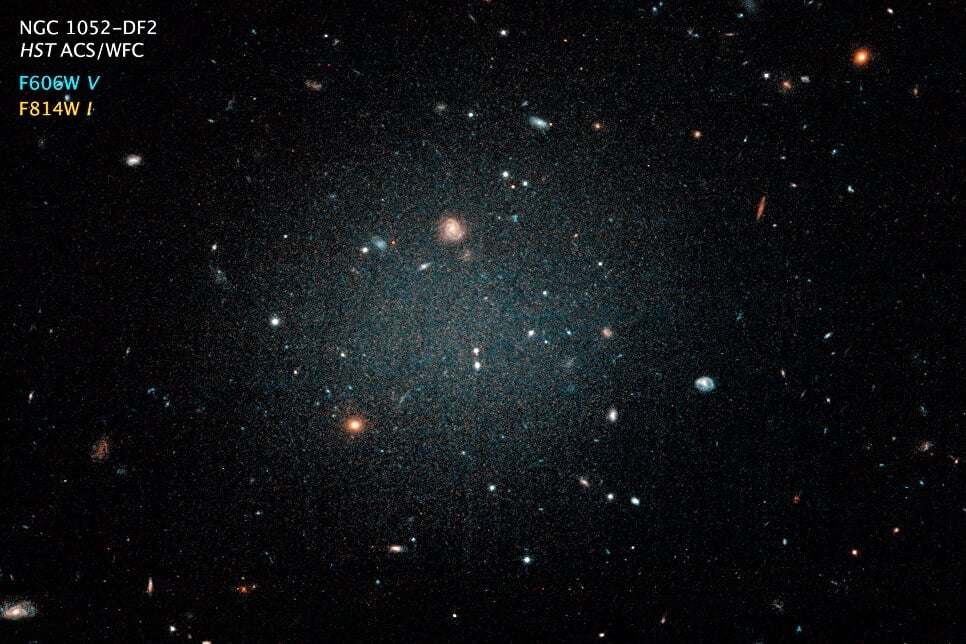
About 65 million light years away is galaxy NGC 1052-DF2. She has one very interesting feature, really puzzled by scientists. The fact that this galaxy is almost no dark matter. About his discovery, the researchers shared in the journal Nature.
Scientists have never seen dark matter directly because it emits no electromagnetic radiation and does not interact directly with it. Conclusions about its existence, they have drawn from numerous observations of indirect signs of how it exerts its effects on ordinary matter. According to these observations, it was found that dark matter may account for up to 27 percent of the mass of the entire Universe.
Researchers believe that dark matter can explain the question of hidden mass in the Universe and, as a consequence of gravity, which allows you to deduct astrophysical objects among themselves. Dark matter, according to scientists, taking an active part in the formation of galaxies, a dense cluster of dark matter due to its gravity attracts ordinary matter in the form of gas and dust which eventually formed stars, planets, and other objects.
As a rule, every galaxy in the Universe (or at least discovered) contains much more invisible dark matter than visible usual. However, with the galaxy NGC1052-DF2 everything turned out quite differently. In it, researchers “discovered” the presence of only 1/400 of a share of the dark mother from her expected amount.
“Discovery of the galaxy with no dark matter was a very unexpected surprise for us. For decades we thought that galaxies begin their life in the form of the cluster dark matter, which gradually gets gas where stars are born and formed sleeve-like spirals of the milky Way. NGC1052-DF2 calls into question all these ideas,” said Pieter van Dokkum of Yale University.
Further exploration of the galaxy NGC1052-DF2 showed that its uniqueness lies not only in the amount of dark matter. It turned out to be can not be attributed to a particular class of galaxies. It does not meet the characteristics of those spiral galaxies that are characterized by the presence of dense Central region, spiral arms and disk-shaped. It also does not fit under the definition of elliptical galaxies in the centers of which usually needs to be supermassive black holes. Instead NGC1052-DF2 looks completely empty.

“NGC1052-DF2 looks like someone took a typical galaxy and left her only globular clusters and groups of stars in its outskirts, and threw away everything else. She is so exhausted that through it you can see other galaxies beyond it. Theories that predicted the existence of such objects, simply does not exist. This galaxy still remains a complete mystery to us, and we can’t explain any of her line. How it originated, we do not understand,” says Pieter van Dokkum.
In the course of further studies of the galaxy NGC1052-DF2 scientists will try to find out her age.
“At the moment we know only that she is more than 10 billion years. If she appeared 10 billion years ago or 13, shortly after the Big Bang, we can not say yet,” added Dokkum.
If you find that she is more than 13 billion years, it will become one of the oldest ever discovered by researchers.
Astronomers have discovered a galaxy in which there are almost no dark matter
Nikolai Khizhnyak